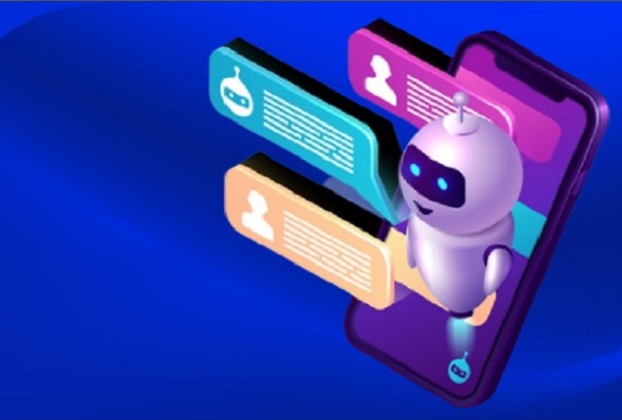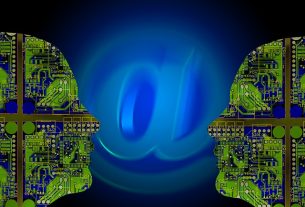ChatGPT is the most trending topic now a days. In less than a week since its release, over 1 million users signed up ChatGPT, which is significantly faster than Netflix, Twitter, Facebook and Instagram. ChatGPT is being speculated to replace Google in a way that its answers to literally any sort of question will be accurate and perfect, to a large extent.
ChatGPT is in fact a Chat bot, based on an Artificial Intelligence technology to solve or answer the given questions in a human-like manner that sounds pretty much innovative. It has got the ability to reply in various styles; It can reply in the form of article, college paper, essay, poetry, limericks, and many more. Current version of ChatGPT is just the first drop of rain before a downpour. So it intends to put AI in the hands of the common person who doesn’t need to be a techie to use it.
ChatGPT was launched by OpenAI in November 2022; It is built on top of OpenAI’s GPT-3 family of large language models, and is raised with both supervised and reinforcement learning techniques. After its inception, it has quickly received attention of millions of users for its accurate and to-the-point responses across a myriad of knowledge disciplines. The experts deem it as a viral sensation that is ready to bring about a profound change in how we search and lookup things. It is yet an infant version of online artificial intelligence. It has reportedly secured a 10 billion dollar investment from Microsoft. The initial GPT stands for Generative Pre-trained Transformers.
ChatGPT is currently in “free research preview” which means that you can use the service for free. It does require you to sign up for OpenAI, which can be as simple as signing up using your GMail account. Once inside, you’re free to use this service just as you use google. Hangout with it and you’ll find a friend – a Polymath, for the life-time.
Bill Gates, the co-founder of Microsoft, is excited about artificial intelligence and its wide-spread impact on the world. He believes that the launch of the AI chat bot ChatGPT has marked a major public breakthrough in the world of AI. ChatGPT, which is different from previous chatbots as it can provide accurate answers to complex questions in human-like conversation. It has impressed many companies and Microsoft, one of OpenAI’s investors, has announced its integration into Bing search engine and business services. Google has also entered in the competition with its AI-powered search engine, Bard. Gates praises the new chat bots for improving office efficiency and for their ability to learn, read, and write through new knowledge. He foresees a lot of potential in AI for healthcare and education. Gates has stated that AI is going to be a hotly debated topic in 2023 on-wards.
A Cumbersome Journey From Fundamental Neural Network Architecture To An Ultimate Search Solution
1980s: Recurrent Neural Networks
In the 1980s, neural networks were first introduced as a way to model complex systems by simulating the behavior of neurons in the human brain.
Artificial intelligence niches, that is cognitive modelling, and neural networks are information processing paradigms inspired by how biological neural systems process data. Cognitive modelling and neural networks try to simulate some properties of biological neural networks. In this regard, artificial neural networks have been applied successfully to speech recognition, image analysis, adaptive control, and natural language modeling.
Because the natural language text is made up of sequences of letters and words of varying lengths, language models require a type of neural network that can make sense of that kind of data. Recurrent neural networks, invented in the 1980s, could handle sequences of words, but they were slow to train and could forget previous words in a sequence. So these early neural network models were limited in scope and complexity, and it was difficult to train them to recognize patterns and accurate predictions.
1990s and Ahead: Further Development and Milestone Achievements
Over the next few decades, researchers continued to refine and improve neural networks, developing new algorithms and architectures that allowed them to tackle increasingly complex tasks. In 1997, computer scientists Sepp Hochreiter and Jürgen Schmidhuber fixed this limitation by inventing LSTM (Long Short-Term Memory) networks, recurrent neural networks with special components that allowed past data in an input sequence to be retained for longer. LSTMs could handle strings of text several hundred words long, but their language skills were still limited.
However a significant success was achieved in the 1990s, with the development of the back-propagation algorithm, which enabled networks to learn from their mistakes and improve over time.
In 2012, the ImageNet Challenge demonstrated the power of deep learning when a neural network called AlexNet achieved a significantly higher accuracy rate than any previous method for image recognition. This breakthrough helped to motivate further research and advancement in the niche of deep learning, leading to the design of larger and more complex networks capable of handling even more complex tasks.
2017: Transformers
In 2017 a major breakthrough was achieved when a team of Google researchers designed transformers – a typical kind of neural network that was capable to track where each word or phrase appears in a sequence. The meaning of words often depends on the meaning of other words adjacent to it, before and/or after. By tracking this contextual information, transformers can handle longer streams of text and capture the meanings of words more precisely. For example, the word “running” is used with different meaning in English. In the sentence “We are running faster for a few minutes to burn calories.”, the meaning of the word running is quite obvious whereas in another sentence “We are running short of time.” meaning we’re left with little time.
2018–2019: GPT and GPT-2
OpenAI’s first two large language models got surfaced in just a few months period in between. The company planned to develop general-purpose multi-skilled AI and believed that the large language models are a key step forward in this respect. GPT, that is Generative Pre-trained Transformer, planted a flag, beating state-of-the-art benchmarks for NLP at the time.
GPT combined transformers with unsupervised learning. This was a cool approach, adopted to train machine-learning models, using huge amount of text data, that hasn’t been used beforehand. This lets the software figure out patterns in the data by itself, without manual intervention for guidance. Many previous successes in machine-learning were based on supervised learning and annotated data, but this is slow working method which limits the size of the data sets available for training and hence provides limited and insufficient learning.
But it was GPT-2 that created the big change. OpenAI claimed to be so concerned about the fact that the people would use GPT-2 “to generate deceptive, biased, or abusive language” that it would not be releasing the full model.
2020: GPT-3
GPT-2 was impressive, but OpenAI’s successor, GPT-3, was proved astonishing. Its ability to generate human-like text was a giant leap. GPT-3 can answer questions, summarize documents, generate big articles and stories in various styles, translate between English, French, Spanish, and Japanese, and more. Its imitation is unprecedented.
One of the monumental takeaways is that GPT-3’s gains came from improving existing methods and techniques rather than inventing new ones. GPT-3 has, to the tune of 175 billion parameters, compared with GPT-2’s 1.5 billion. It was also trained on a lot more data.
But training on text taken from the internet gives rise to new problems. GPT-3 consumed much of the disinformation and prejudice it found online and reproduced it on demand. As OpenAI acknowledged: “Internet-trained models have internet-scale biases.”
With the increase in computing over the years and datasets became larger and more diverse, neural networks began to achieve impressive results in a wide range of applications, from image recognition to natural language processing.
Overall, the journey from early neural networks to modern language models like ChatGPT has been one of continuous refinements and improvements, driven by advances in computing power, algorithms, and large data availability. As these models become more sophisticated, they have the potential to transform the way we interact with technology and with each other.
The Capabilities of ChatGPT
For Computer Programmers
The things ChatGPT can do for the computer programmers are; it can explain what a piece of code means, can explain why a line of code isn’t working and, one step further, can fix it. It can create a large software module without errors. It can change the CSS of a line of code as per the requirements. The bigger thing, it can generate regular expressions (regex). It can understand your code and add comments to your code. It can also generate code in various programming languages like Python, Javascript, C#, Html, CSS etc. and the list is speculated to increase with time. You can also use ChapGPT to generate dummy data, write unit tests, translate text or code from one language to another.
For Content Writers and Students
ChatGPT is an advance language model that can understand and generate text just like human experts do. You can use it to create content for your website, articles, emails, tweets, cover letters, office letters, resume and so on.
For Frontline Customer Support
As ChatGPT gets more “educated” and “intelligent” it will definitely be capable to reduce and replace human employees in front-line customer support roles. Many of the companies today have really poor customer service – under-trained or poorly trained front-line staff due to tight or mismanaged budgets. ChatGPT will resolve that problem in much more comprehensive and efficient manner.
The Downside and Potential Threats It Can Pose
While ChatGPT can be a valuable tool in many contexts, there are also potential risks and threats associated with its misuse. Here are some of the probable threats ChatGPT could pose to the society:
Ready-made Content
The capability to provide with accurate and to-the-point articles, academic papers, and other content to the students rings the alarm bell for the society. The implications for society are profound which will potentially deteriorate the education standard at invariably all levels, causing irrecoverable damage. Availability of ready-made content for complex and laborious assignments will serve no good to the society. The policy makers need to get ahead of the curve to address the outcomes. This is the high time to introduce more and more viva tests in every education level possible where the students need to represent themselves to verbally explain what they have learnt rather than mainly relying on essays, reports and assignments.
Misinformation
ChatGPT is great but it is only as good as the data it has been trained on, and it is possible that it could generate responses that contain inaccurate or misleading information. This could potentially contribute to the spread of misinformation and undermine the credibility of legitimate sources of information.
ChatGPT is not a human being after all. You cannot easily instill, for instance largely acceptable perceptions in it by mere extensive “learn through reading” method, as opposed to the human beings who are capable to analyze and differentiate seemingly same but actually different perceptions. So for ChatGPT, it is likely to lead to nonsensical answers, no matter how much they sound reasonable from a limited perspective. This behavior is called “artificial intelligence hallucination” and is not easy to handle to avoid.
Biasedness
ChatGPT may inadvertently generate responses that reflect societal biases or strengthen stereotypes. This could potentially manipulate public opinion and in effect provoke harmful attitudes and reactions.
Overall, while ChatGPT has enormous potential benefits, it is important to be aware of the potential risks and to take measures to mitigate them. This could include developing safeguards to prevent the spread of misinformation, promoting diversity and inclusivity in the training data, and educating people about the limitations of AI and the significance of critical and skeptical thinking.
Google vs ChatGPT
The launch of ChatGPT for the public use has sparked an enormous debate about the future of Google as a leading search engine. Although nothing including ChatGPT is going to replace Google anytime soon but because of its specialty on many grounds it will certainly divert a considerable amount of traffic from Google to ChatGPT.
Nevertheless, Google and ChatGPT are quite different, in many respects, in the nature of service they provide and the purposes they serve. Here are some of the obvious differences in them:
Google is a search engine that retrieves information from the internet based on user queries, while ChatGPT is an AI language model that generates human-like responses to user inputs. Google’s primary function is to search for information and present it in a ranked list of results, while ChatGPT is designed to engage in conversation with users and provide natural language responses.
Google uses an algorithmic approach to search for information, while ChatGPT uses deep learning techniques to generate responses based on patterns learned from vast amounts of text data.
ChatGPT has an edge on Google when responding to complex questions which may require quite a bit of time to understand before rendering the correct answer. More so, it “remembers” the previous points from the current chat session so you don’t need to put the complete question every time. The conversation is so comfortable that you think that you’re talking to a human being on the other side.
Google has a, second to none, feature that it provides links to extensive relevant and semi-relevant resources matching the keywords and sentences – which are required by researchers, marketing experts and content writers in order to get sufficiently educated on the subject matters they’re interested in.
Google has a well-defined user interface and search results page, while ChatGPT can be integrated into various applications and platforms, such as chatbots, virtual assistants, and customer service systems.
With this enormous achievement of this century, ChatGPT is truly deemed as part Wikipedia, part researcher, part analyst, part teacher and part poet with near-perfection in everything. It can write a comprehensive article on the profound social, political and economic impacts of the Industrial Revolution in the late 18th Century. It can write a long comparison between Capitalism and Socialism. It can help research about anything by providing all research work (and perhaps with accompanied data) available on the topic in question. It can write an exquisite poem on the need to wake up early in the morning. It can write a formal letter to the Mayor of the city regarding the water logging issue.
Future Prospects
OpenAI is continuously working on improving their AI models, and they may introduce new features or enhancements in the future.
In the past, OpenAI has introduced various updates and improvements to their language models, such as larger models with improved accuracy, more sophisticated language capabilities, and better integration with various applications and platforms. Some of the features that may be incorporated in future updates could include better natural language processing, enhanced understanding of context and gist, and improved conversational capabilities.
In essence, as AI technology continues to advance and stretch its horizon, we can expect to see significant improvements in ChatGPT’s capabilities and feature-set, which could lead to even more exciting and useful applications for businesses and individuals alike.




